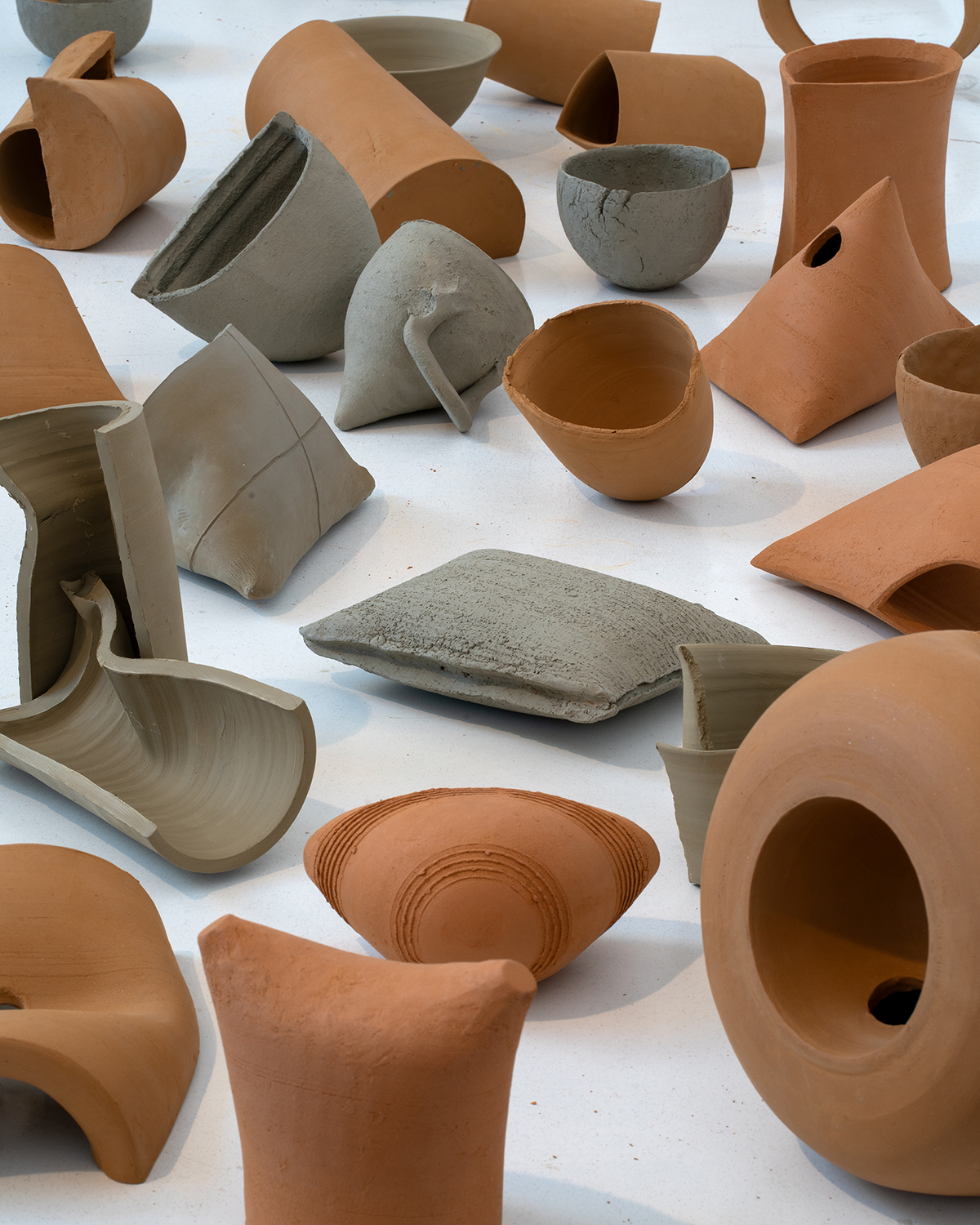Ajay Manthripragada is the 2024 Lily Auchincloss Rome Prize Fellow in architecture. His practice, based in California, is recognized for buildings that are at once conceptually and experientially rich. He has been nominated for the Mies Crown Hall Americas Prize as an emerging practitioner and has taught design and theory at several institutions, including the Rice University School of Architecture and the Graduate School of Design at Harvard University.
Since arriving at the academy, Manthripragada has focused his work on architectural terracotta. The title of his project, Imbrex and Tegula, refers to the interlocking roof tiles found throughout Rome and far beyond. Using the everyday roof tile as a starting point, he has transferred his knowledge of wheel-based craft traditions to the making of multivalent objects in his studio. In addition, with ongoing projects in the historic port city of Mangalore, India, he is exploring parallels between the terracotta roof tile industries of central Italy and the Malabar Coast.
On Tuesday, March 26 at La Sapienza in Rome, Manthripragada will join principals from Supervoid, a Rome-based architecture firm, in the second edition of our new Talking Architecture series, under the title TRANSATLANTICA. The participants will discuss influences on their work drawn from Italy and the United States.
AAR spoke to Manthripragada this month about his recent activities.
What have you been working on while at AAR? Has your project changed since arriving?
Initially, I planned to design and construct mock-ups of roofs using terracotta tiles. But my project, while still focused on terracotta, shifted during my first few weeks in Rome. I became interested in making terracotta objects themselves, rather than assembling premade tiles.
I’ve worked with clay for as long as I’ve practiced architecture, so it seemed natural to bring these things together. In my studio here, I have developed a clay practice, occasionally using a fifty-year old pottery wheel that I bought from a local high school. Usually, I work without a preconceived idea and always without drawings or other types of preparatory representation. This process is at once familiar and new: it is common in my ceramics, but in my architectural work I have always relied on orthographic drawing as the origin of an idea.
The forms I am creating now sometimes resemble tiles, and at others different architectural elements or pottery; sometimes they are more ambiguous. They will remain unfired and will be recycled into wet clay at the end of my fellowship. Alongside these clay pieces, I continue to research the manufacture of roof tiles in Italy and along the Malabar Coast in India. Related to this, I am printing large-scale composite photographs of the tile factories that I have visited during my fellowship.

What’s something that has surprised you about being at the Academy?
The freedom to do my creative work as I choose, and the number of times that I have been encouraged to follow new paths and ideas discovered while here. It is rare to be in a situation—let alone an institution—where there is no imposed structure on one’s process. That is not to say that there is a lack of interest in what everyone is doing, but instead that our projects are allowed to unfold organically. I’ve also appreciated how we encourage one another to rethink boundaries. For example, when I have differentiated between my project here and “Art,” the fellows in the visual arts have been quick to question that distinction, suggesting that I am operating as an artist, too.
Have you had any great conversations with other fellows or residents that changed your perspective?
There have been many, but the ongoing conversation with Anthony Vine, a Rome Prize Fellow in musical composition, has had the most profound impact on my thinking. From the beginning, I felt that he approaches music like I approach architecture. There was also a natural overlap with his interest in terracotta acoustic jars. While these links led to many discussions about our work in the abstract, they also led to a concrete collaboration: a sound sculpture called terrasong, installed in the library for the Winter Open Studios last December.
What have you seen in the city of Rome that has made a strong impression on you?
I came to Rome to look at roof tiles thinking I would find them only on roofs. But I have found them used across a variety of applications, ancient and modern: as mailboxes, planters, and even coffins. I see this as an object lesson in a broader pattern of Roman resourcefulness over time.